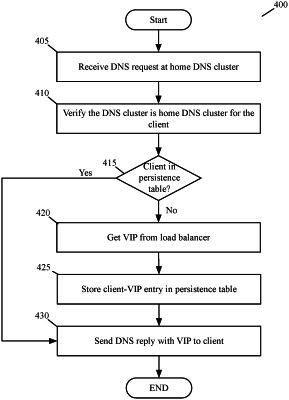| CPC H04L 61/4511 (2022.05) [H04L 61/2514 (2013.01); H04L 61/5007 (2022.05); H04L 67/1095 (2013.01); H04L 61/5038 (2022.05)] | 18 Claims |

|
1. A method of re-allocating a set of persistence table entries for a set of clients from an initial set of domain name system (DNS) clusters to an updated set of DNS clusters, the method comprising:
generating, for the updated set of DNS clusters, a hash wheel comprising a plurality of hash ranges each associated with a DNS cluster;
for each persistence table entry associated with each client, (i) generating, from a client identifier (ID) of the client, a hash value that falls within a hash range of the hash wheel and (ii) identifying a home DNS cluster in the updated set of DNS clusters for the client as the DNS cluster associated with the hash range containing the generated hash value;
for each client that has a different updated home DNS cluster in the updated set of DNS clusters than an initial home DNS cluster in the initial set of DNS clusters, moving the persistence table entry to the updated home DNS cluster; and
based on a moved persistence table entry associated with a client, sending, from the updated home DNS cluster of the client, a DNS reply to the client with a virtual internet protocol (VIP) address that is the same as a previous DNS reply sent from the initial home DNS cluster.
|